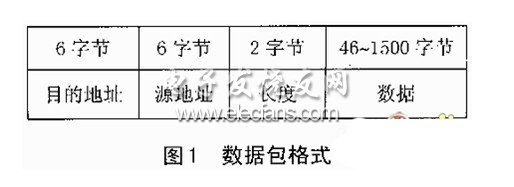The DSP chip is a microprocessor with a special structure designed to realize various digital signal processing algorithms. Its excellent performance, rising cost performance, and increasingly sophisticated development methods make its application more and more extensive. The introduction of computer network technology into the embedded system with DSP as the core, making it a digital and networked combination of communication, computer and audio-visual functions, must greatly enhance the application value and market prospects of DSP systems. Combining DSP technology with network technology must solve two key problems: one is to realize the hardware interface technology of DSP and network card, and the other is to design the network communication program based on DSP. DSP and network card hardware interface technical reference [1] has a more detailed discussion, the following mainly discusses DSP-based network communication program design. 1 Development of communication protocol Protocols are regulations used to manage communications and are the basis for the implementation of network system functions. Since the DSP can directly operate the network card, corresponding to the OSI network model, the network card includes all the contents of the physical layer and the data link layer. Therefore, the data frame encapsulation format on the data link layer is specified, which can be based on the DSP. Specific specifications are provided for communication between any of the sites in the local area network. Because Ethernet is one of the most popular LANs in the world, in Ethernet, the network card is used to implement the 802.3 procedure. The typical representatives are NE2000 from Novell and 3C503 from 3COM. Therefore, the specific test platform in the research work is The Ethernet LAN, which is composed of DSP as the core, is mainly used for real-time communication of voice. The network card used is Novell's NE2000 network card. The basic components of the NE2000 NIC are described in reference [2], and the core device is the Network Interface Controller (NIC) DP8390. The device has three functions: the first is IEEE802.3MAC (Media Access Control) sub-layer protocol logic, which implements data frame encapsulation and decapsulation, CSMA/CA (Carrier Sense Multiple Access with Collision Detection) protocol and CRC. Verification and other functions; the second is the register file, the user's control of the NE2000 network card communication process is mainly through the programming of various command registers in these register files; the third is the read and write control logic of the buffer RAM on the network card. The DP8390 transmits and receives using the standard IEEE802.3 frame format. IEEE 802.3 refers to the protocol and technical specifications of Ethernet, but the basic structure of the data packet has been modified, mainly because the type field becomes a length field. Therefore, the basic format of the communication data packet in the LAN with DSP as the core is shown in Figure 1. The DSP reads the data packet and packs starting from the destination address. The destination address is used to indicate the destination node address of a data frame to be transmitted in the network. The NE2000 supports three destination addresses: single address, group address, and broadcast address. A single address indicates that only one node can receive the frame information; a group address indicates that up to 64 bytes can receive the same frame information; and a broadcast address indicates that it can be received by all sections in the same network. The source address is the physical address of the sending frame node, which can only be a single address. The destination address and source address refer to the hardware address of the network card, also known as the physical address. The 2 bytes after the source address indicate the data length of the frame, and only the length of the data portion, which is filled in by the user. The data field consists of 46 to 1500 bytes. Data larger than 1500 bytes should be divided into multiple frames for transmission; when smaller than 46 bytes, it must be padded to 46 bytes. There are two reasons: one is to ensure the shortest frame length from the destination address field to the frame check field length of 64 bytes, in order to distinguish the valid frame and useless information in the channel; the second is to prevent a station from sending short frames when The frame transmission is completed when the first bit has not reached the farthest end of the bus, so that no collision signal is detected when a collision may occur. The NE2000 considers the received frame less than 64 bytes from the destination address field to be "fragmented" and deletes it. In the data field, according to the specific functional requirements of the system, the user can reserve a number of bytes to specify the corresponding protocol, so that the communication parties can implement different functions according to the information contained in these bytes.
Product Description
Available height:5-80m
Electric pressure:10kv--550kv
Material:Q345B/A572,minimum yield strength>=345MPA,
Galvanized:Hot dip galvanization,thickness is>=12um
Delivery lead time:30 days after receiving 30% deposit
Lifetime:Minimum 25 years
Structure:Overlap connection/Flange connection
Galvanizing standard:EN ISO 146,ASTM/A123
Manufacturing and workmanship:BS449 or AISC
Welding standard:BSEN287,BSEN288 or equivalent
Telecommunication Monopole,Palm Tree Monopole,Supply Power Transmission Monopole,60FT Monopole YIXING FUTAO METAL COMPONENT UNIT CO.,LTD , http://www.chinasteelpole.com
60FT Monopole Tower
Q235B/A36,minimum yield strength>=235MPA